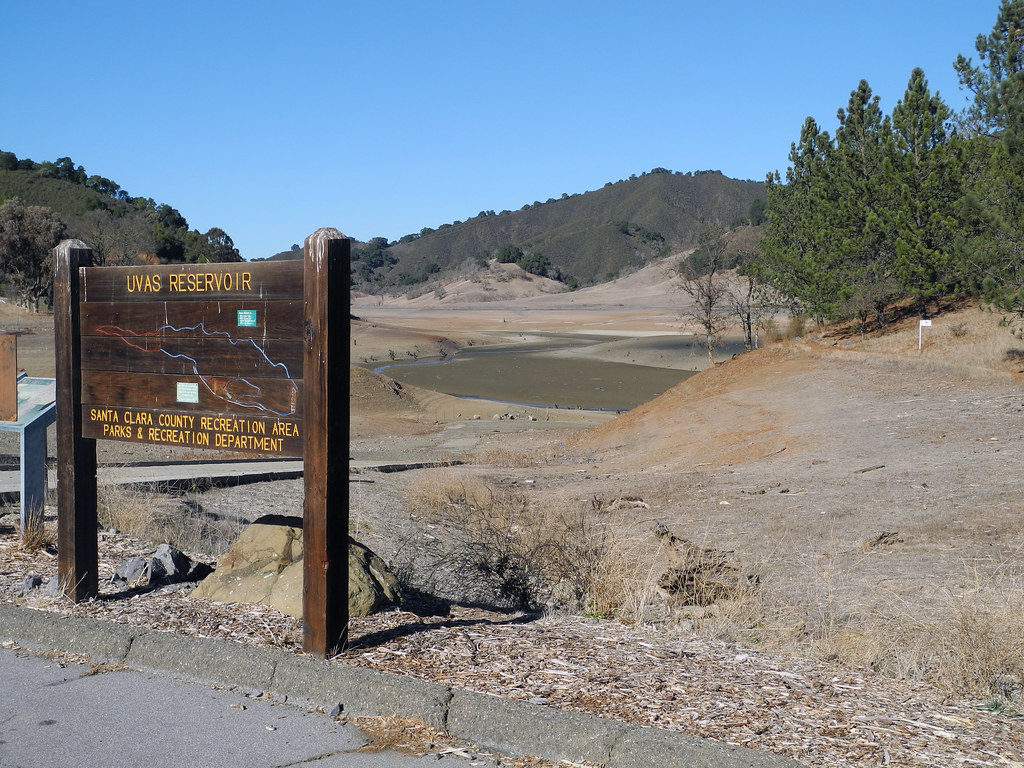
Residents of the Bay Area are quite familiar with the golden hillsides surrounding us during the summer dry season. Yet now those hills remind us that we are in the midst of another severe drought, just five years after a record-breaking dry spell for our state. During a drought emergency, the impact and importance of our work come sharply into focus — the protection of open space and natural resources is critical to drought resilience in our climate-changed region.
Local Open Space Acts as Water Sponge and Filter
Open space helps sustain our water supply. It acts as a sponge allowing for natural, low-cost water storage. Unimpeded by pavement, roofs, and storm sewers, the rains that fall on our open space percolate down to the groundwater layers or run to reservoirs. Four out of ten gallons of water consumed in Santa Clara County come from local rain absorbed through open space soils to become part of the aquifer below. San Mateo coastal residents and some by the Bay also use local groundwater, with more use likely occurring in future years.
Open space helps clean our water. Soils, plant roots, and the plethora of microorganisms in the soil filter the pollution — like lawn fertilizers and car exhaust — that is found in rain run-off, providing a natural form of remediation and purification.
Smart Farming Practices Can Help
This also applies to well-managed farmland soils. That is why we advocate for policies and programs that support climate-smart farming practices, including efficient irrigation methods. Healthy soils can increase water filtration and are needed to help keep our water clean and food on our tables.
Preserving local agriculture rather than transferring all farming to the Central Valley is even more important during droughts. Compared to the parched and overheated Central Valley with its subsiding soils due to overdrawn groundwater, the farms of Santa Clara County and coastal San Mateo are far more appropriate places to turn water into food. Our counties have higher groundwater tables, more local rain, and more forgiving temperatures translating into better drought resilience.
Preserving Native Species Even More Important During Droughts
Ecologist Aldo Leopold once said, “To keep every cog and wheel is the first precaution of intelligent tinkering.” He meant that every plant, animal, and natural resource is important to the survival of the ecosystem, even though we might not understand the exact role that each one plays. This applies to the many native plants and animals living in and near watercourses. Protecting their habitats during droughts worsened by human-caused climate change and water withdrawal is crucial to avoid a catastrophic loss of biodiversity across our entire region.
Our decades of work to safeguard these resources, riparian areas, creeks and rivers, plants, and animals — coupled with appropriate instream flow levels — will determine their ability to survive under severe drought conditions.
The Land is a Gift
Some water experts have stopped referring to current water conditions as “drought” because the effects of climate change are the new normal. This only emphasizes the importance of preserving open space land and stopping sprawl as key strategies to reducing the impacts of drought.
The land we work to protect is a gift that sustains us all. We will continue our critical work to preserve that gift, saving water for the people, plants, and animals of our region.

Leave a Reply